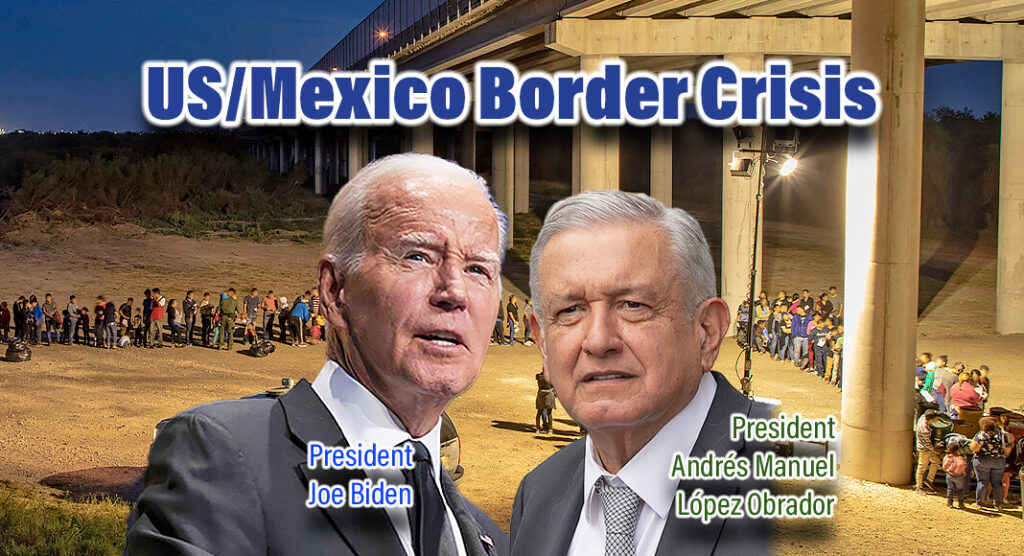
Texas Border Business
By Roberto Hugo González
BREAKING: Simon Ateba, Chief White House Correspondent at Today News Africa in Washington, says that the White House posted that President Biden spoke with President Andrés Manuel López Obrador of Mexico today and told him he’s sending a high-level delegation there to discuss how to solve the border crisis.
In a statement minutes ago (this morning), the White House wrote, “President Joe Biden and President Andrés Manuel López Obrador of Mexico spoke this morning about ongoing efforts to manage migratory flows in the Western Hemisphere, building on the Los Angeles Declaration for Migration and Protection that President Biden launched in Los Angeles in June 2022. The President and President López Obrador agreed that additional enforcement actions are urgently needed to reopen key ports of entry across our shared border.
“President Biden has asked Secretary of State Anthony Blinken, Secretary of Homeland Security Alejandro Mayorkas, and White House Homeland Security Advisor Liz Sherwood-Randall to travel to Mexico in the coming days to meet with President López Obrador to discuss further actions that can be taken together to address current border challenges.”
The following information is based on research by Texas Border Business using the U.S. Border Patrol records; the migrant situation at the US-Mexico border is characterized by high numbers of encounters, shifting migrant demographics, and evolving policies and challenges:
- Record-High Encounters: In fiscal 2021, the Border Patrol reported its highest level of migrant encounters at the U.S.-Mexico border, with 1,659,206 encounters. This number surpassed the previous peaks in 2000 and 1986. These encounters encompass apprehensions (temporary custody) and expulsions (immediate removal without custody).
- Decrease in Recent Encounters: As of October 2023, there was a noticeable decrease in migrant encounters. The U.S. Border Patrol recorded 188,778 encounters between ports of entry along the southwest border in October 2023, a 14% decrease from September 2023.
- Changing Migrant Demographics: There has been a shift in the demographics of migrants. While traditionally migrants were predominantly from Mexico and the Northern Triangle countries (El Salvador, Guatemala, Honduras), recent trends show an increase in migrants from other countries, including Colombia, Cuba, Nicaragua, Peru, and Venezuela. For example, in November 2022, a majority of the migrants encountered (63%) were from countries other than Mexico and the Northern Triangle region.
- Policy Shifts and Challenges: The change in migrant demographics poses new challenges for border enforcement and processing capacity. The Border Patrol has reverted to using its pre-Title 42 authority under Title 8 for processing arrivals, which allows for expedited removal of migrants who do not claim a credible fear of return to their country of origin. However, the lack of repatriation agreements with certain countries complicates these processes.
- Rise in Family Encounters: There has been a sharp increase in families encountered at the U.S.-Mexico border, predominantly from Mexico, Honduras, and Guatemala. This increase came after the termination of Title 42, which had been used extensively during the pandemic for expulsions.
- Repeat Crossers: The high number of encounters in fiscal 2021 included a significant proportion of repeat crossers. More than a quarter of all migrant encounters involved individuals who had been previously encountered by the Border Patrol.
- Economic and Humanitarian Impacts: The migrant situation has significant humanitarian and economic implications. Issues such as overcrowded shelters, lack of resources, and economic disruptions due to border closures have been reported. For example, railway bridge closures due to migrant surges have led to supply chain disruptions and considerable economic losses.
This situation at the US-Mexico border reflects a complex interplay of migration patterns, policy responses, and humanitarian concerns, with the Border Patrol playing a central role in managing and reporting these dynamics.














